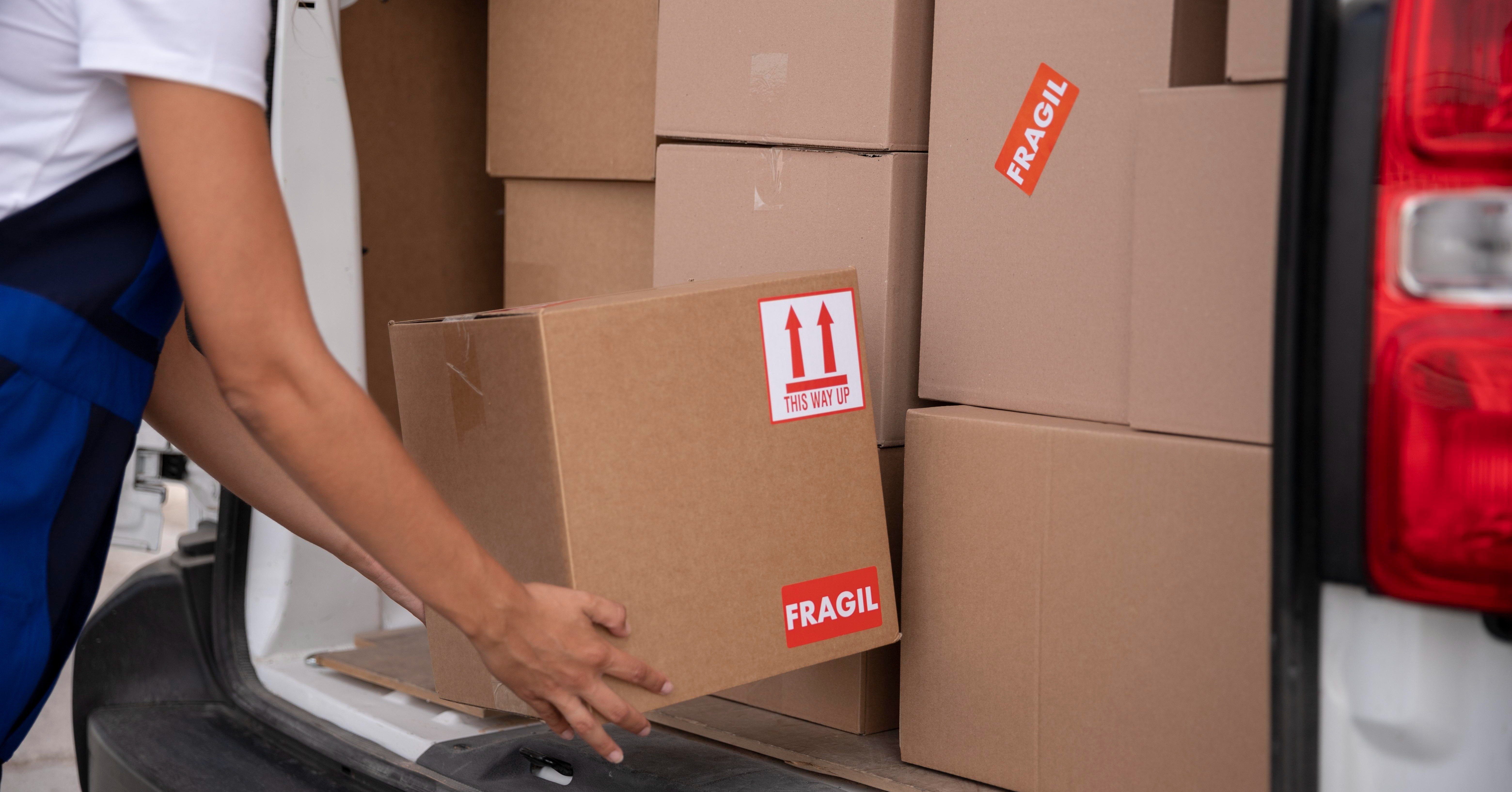
Do your shipping costs feel unpredictable or inflated? Dimensional weight could be the sneaky reason behind it.
Dimensional weight, also known as DIM weight, changed the shipping game: since 2015, carriers no longer just look at the scale; now they charge for both the space you occupy and the weight you declare.
For businesses, overlooking this detail can lead to shrinking profit margins while the carriers keep cashing in.
Quick Overview
What is it? A pricing method used by major carriers to convert cubic inches into "billable pounds."
Why does it exist? A truck full of pillow boxes weighs little but occupies as much space as one full of books. Airlines learned it first, major parcel carriers adopted it, and today, it's the industry standard.
Who does it affect? Any business shipping bulky, lightweight items (pillows, yoga mats, stuffed toys, etc.).
How is DIM Weight Calculated?
The DIM weight formula is a straightforward equation:
DIM Weight = (Length × Width × Height) / DIM Factor
Here’s how to calculate it:
Step 1: Measure your package dimensions (length, width, and height) in inches, rounding each up to the nearest whole number.
Step 2: Multiply those dimensions to get the cubic size of your package.
Step 3: Divide the cubic size by the DIM factor—a standard number set by the carrier—to get the dimensional weight (in pounds, rounded up).
Example:
Box: 20" x 14" x 10" = 2,800 cubic inches
FedEx DIM Factor: 139
Actual Weight: 15 lbs
DIM Weight = 2,800 / 139 ≈ 20.1 lbs
You’re billed for whichever is higher: actual weight or dimensional weight. Since your package weighs 15 lbs and the DIM weight is 20.1 lbs (rounded up to 21), you’ll be charged for 21 lbs.
What's the DIM Factor?
In the DIM weight formula, this number indicates how many cubic inches are permitted for each pound of weight. Since it acts as the divisor, a smaller DIM factor leads to a larger DIM weight, which in turn means higher shipping costs.
|
Carrier |
DIM Factor |
Notes |
Links |
| FedEx | 139 | Applies to most FedEx domestic and international services; billing is based on greater of actual or DIM weight. | FedEx Dimensional Weight Calculator |
| UPS | 139 | Standard divisor for domestic and international shipments; DIM weight generally applies to packages over 1 cubic foot (1,728 in³). | UPS Shipping Dimensions & Weight |
| DHL | 139 | Used for DHL Express shipments domestically and internationally; equivalent to metric divisor of 5000 cm³/kg (~139 in imperial). Applies effectively to packages over 1 cubic foot. | DHL Volume Calculator |
| USPS | 166 | Applies to packages exceeding 1 cubic foot (1,728 in³) in services like Priority Mail and Parcel Select; DIM divisor is higher than private carriers. | USPS Dimensional Weight Info |
How Can You Optimize Around DIM?
Here are four key areas you must look at to mitigate DIM-related costs:
1. Optimize Your Packaging
- Right-sizing: Work with your packaging team or suppliers to shrink box dimensions while still protecting your product.
- Box diversification: Keep a range of box sizes to better match order volume and avoid paying for air.
- Switch to mailers: Moving from box to padded envelope often reduces DIM weight for soft items.
- Lightweight materials: Single-wall corrugated cardboard, stretch film, and inflatable dunnage save grams and inches.
2. Integrate Technology
- Cartonization software: Automate box selection with software that recommends the ideal box based on SKU, order, and DIM factor.
- Laser dimensioners: 3D cameras that measure packages on the line without stopping sorting, maintaining the precision required for DIM billing.
3. Adjust Your Carrier Strategy
- Carrier diversification: Regional carriers and specialized logistics providers sometimes offer more favorable DIM weight terms for specific types of shipments or geographic regions.
- Rate negotiation: Large shippers or those using a third-party logistics provider (3PL) can often secure more favorable terms with carriers.
- Shipment audit: Analyze DIM-heavy shipments to spot patterns and correct overpackaging or carrier billing errors.
4. Reshape Your Catalog
- Product design: If you control manufacturing, consider shipping costs during product design phases, recognizing that a product's shape and size can significantly impact its total cost of delivery.
- Smart bundling: Grouping complementary products in one loose box can reduce cost per unit by improving overall density.
How Techdinamics Tackles DIM Weight (So You Don’t Have To)
At Techdinamics, we know that dimensional weight can silently eat away at your margins. That’s why our Shipping Optimization Hub includes tools purpose-built to help you stay in control.
Here’s how we help:
Cartonization
Beyond just fitting boxes on a screen, techSHIP’s cartonization tool auto-selects, packs, and guides the picker with precise packing instructions — all while minimizing dimensional weight to avoid costly packaging inefficiencies.
Advanced Mark-ups
techSHIP lets you define and apply custom markups automatically on DIM-weighted shipments. This enables predictable pricing and helps protect your bottom line.
techAUDIT
Our auditing solution allows your team to identify recurring DIM-related billing issues, stop revenue leakage, and resolve inefficiencies fast.
Shipping Programs
Beyond tools and automation, we offer Shipping Programs that give our customers access to more competitive DIM factors, helping them save even more on every shipment.
Final Thought
Dimensional weight is a key variable in your cost structure and pricing strategy. Mastering it gives you a competitive advantage: you'll save on every box, while making your operation more sustainable. In a market where every cubic inch counts, the business that calculates well, wins.
Want to see how much you could save? Let’s talk.


